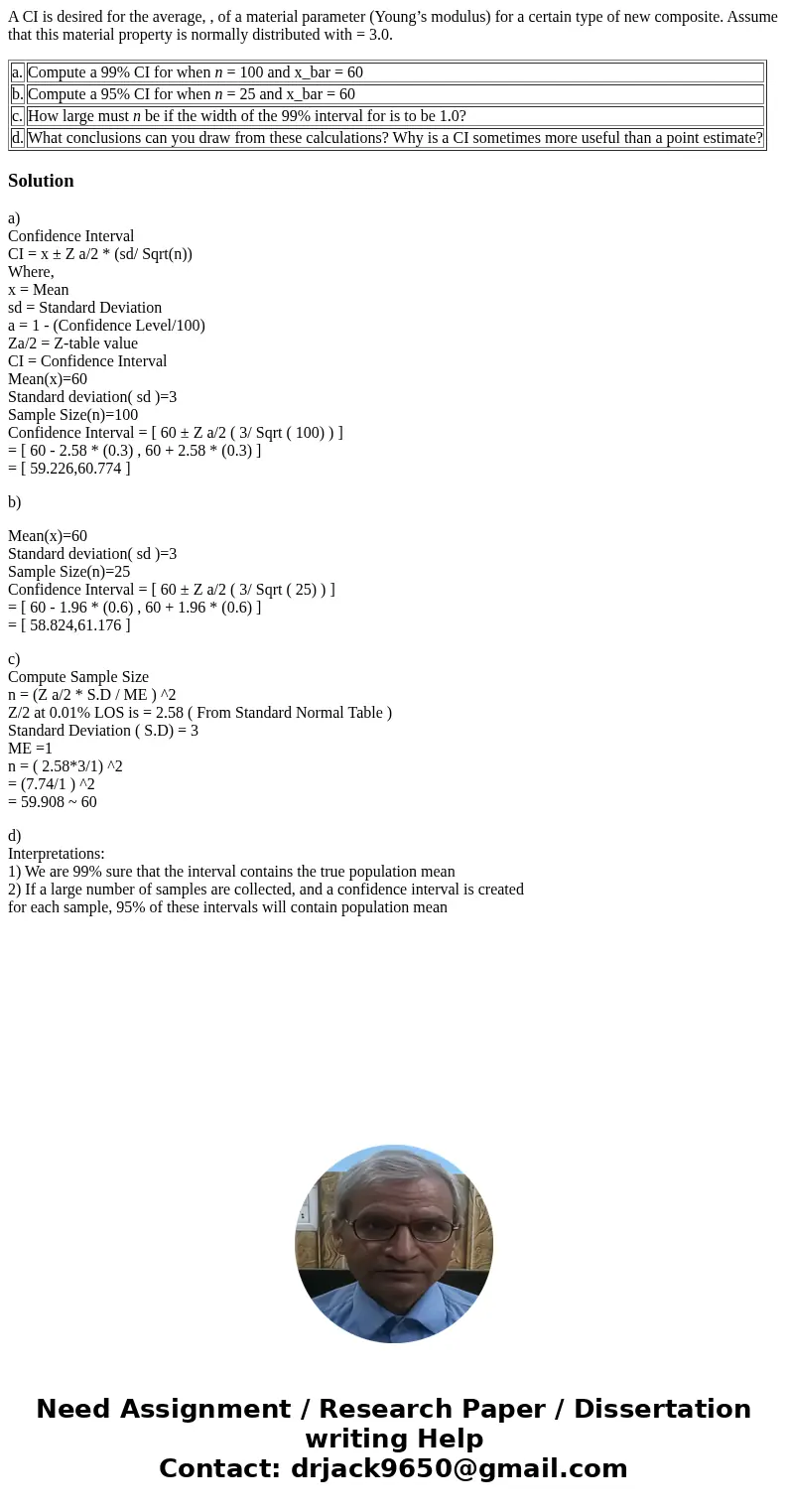A CI is desired for the average of a material parameter You
A CI is desired for the average, , of a material parameter (Young’s modulus) for a certain type of new composite. Assume that this material property is normally distributed with = 3.0.
| a. | Compute a 99% CI for when n = 100 and x_bar = 60 |
| b. | Compute a 95% CI for when n = 25 and x_bar = 60 |
| c. | How large must n be if the width of the 99% interval for is to be 1.0? |
| d. | What conclusions can you draw from these calculations? Why is a CI sometimes more useful than a point estimate? |
Solution
a)
Confidence Interval
CI = x ± Z a/2 * (sd/ Sqrt(n))
Where,
x = Mean
sd = Standard Deviation
a = 1 - (Confidence Level/100)
Za/2 = Z-table value
CI = Confidence Interval
Mean(x)=60
Standard deviation( sd )=3
Sample Size(n)=100
Confidence Interval = [ 60 ± Z a/2 ( 3/ Sqrt ( 100) ) ]
= [ 60 - 2.58 * (0.3) , 60 + 2.58 * (0.3) ]
= [ 59.226,60.774 ]
b)
Mean(x)=60
Standard deviation( sd )=3
Sample Size(n)=25
Confidence Interval = [ 60 ± Z a/2 ( 3/ Sqrt ( 25) ) ]
= [ 60 - 1.96 * (0.6) , 60 + 1.96 * (0.6) ]
= [ 58.824,61.176 ]
c)
Compute Sample Size
n = (Z a/2 * S.D / ME ) ^2
Z/2 at 0.01% LOS is = 2.58 ( From Standard Normal Table )
Standard Deviation ( S.D) = 3
ME =1
n = ( 2.58*3/1) ^2
= (7.74/1 ) ^2
= 59.908 ~ 60
d)
Interpretations:
1) We are 99% sure that the interval contains the true population mean
2) If a large number of samples are collected, and a confidence interval is created
for each sample, 95% of these intervals will contain population mean

 Homework Sourse
Homework Sourse